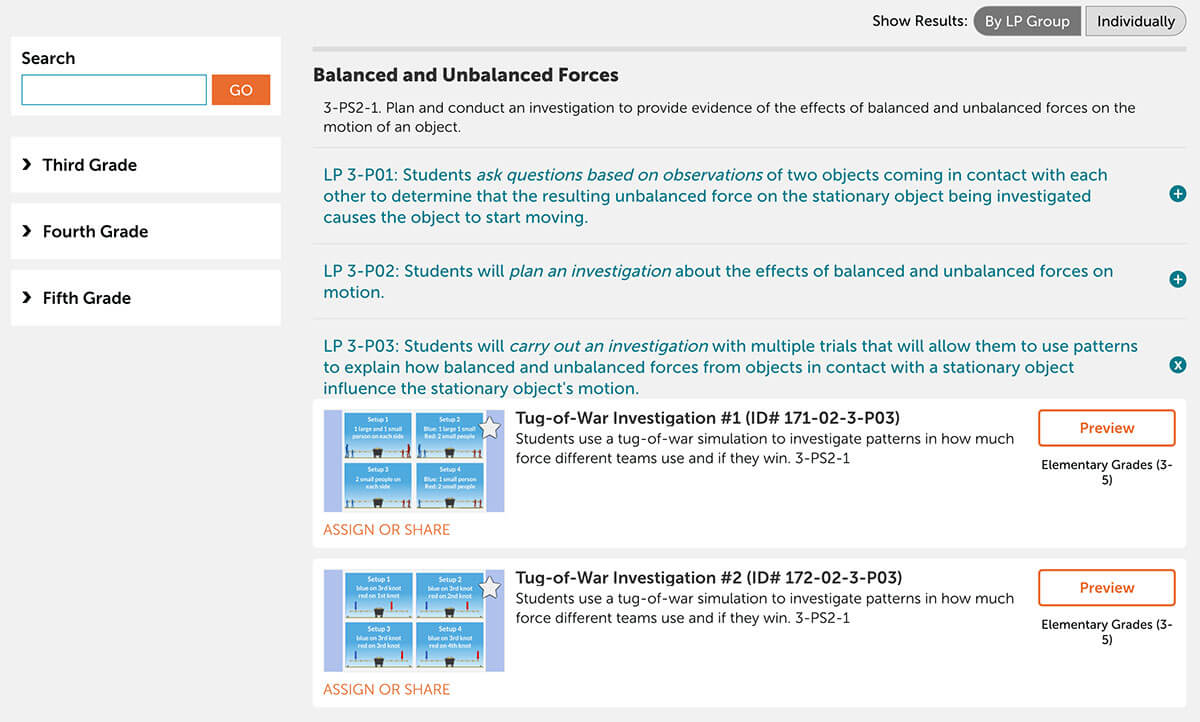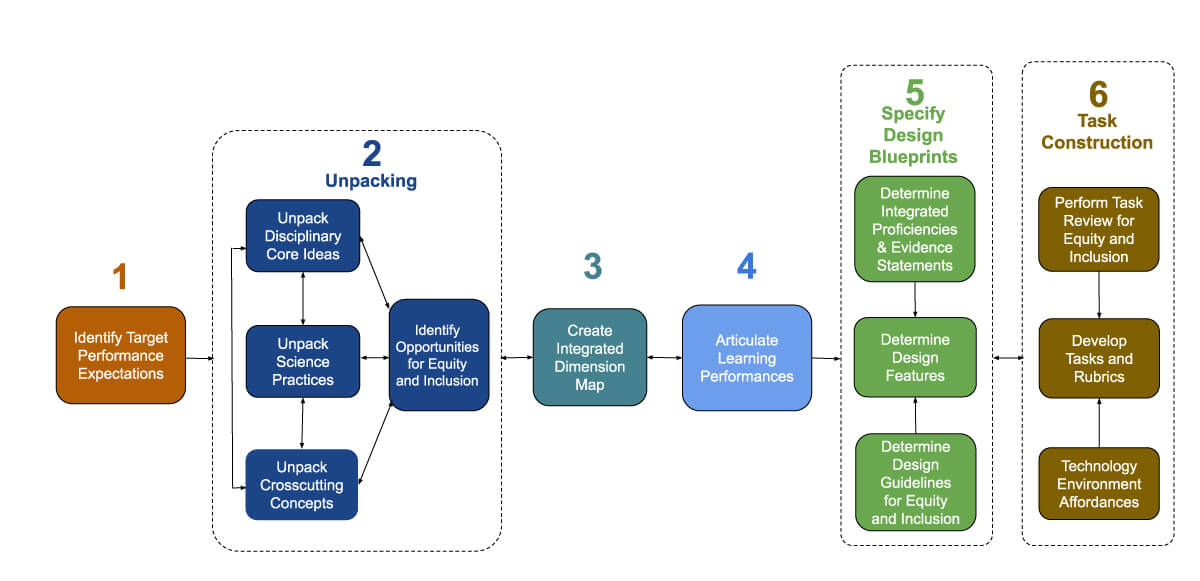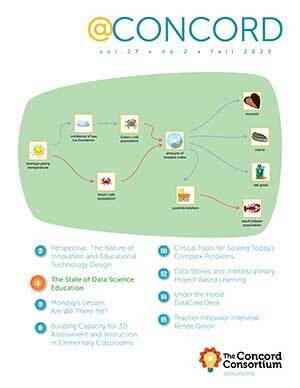Building Capacity for 3D Assessment and Instruction in Elementary Classrooms
Teachers have found it challenging to make the shift to three-dimensional teaching as envisioned in A Framework for K-12 Science Education and the Next Generation Science Standards (NGSS). For those with less scientific experience and coursework, the transition can be even more daunting. Over the past four years, the Building Elementary Teachers’ Capacity team at the University of Illinois at Chicago, UChicago STEM Education, the University of Kansas Achievement and Assessment Institute, and the Concord Consortium has worked with teachers in two school districts in the Chicago area, one urban and one suburban, to help them overcome the challenge of 3D teaching. Together we co-developed formative assessments aligned to the NGSS and supported a virtual learning community for peer support.
Professional learning
Professional learning sessions, including both in-person and virtual settings, were essential for engaging teachers in task development and classroom implementation.To facilitate a virtual learning community, the project created the Understanding Progress in Science website. The website offers teacher resources for each assessment task, provides information and teaching strategies for aligning instruction and assessment with the NGSS, and hosts a forum for supporting collaboration and community. During the course of their participation, teachers gained expertise in the three dimensions of the NGSS performance expectations.
To date, the project has published 41 assessment tasks for grades 3 through 5 in the Next Generation Science Assessment Portal, which contains both elementary and middle school NGSS-aligned assessments. Tasks are organized by NGSS standard or performance expectation (PE), which are further unpacked into several learning performances (LPs) (Figure 1). Taken together, the LPs describe a scaffolded set of student performances that move students toward an understanding of the overall PE. Each LP has at least two formative assessment tasks.

To create the tasks with teachers, the project used a framework that begins by identifying target performance expectations, unpacking the three dimensions, and identifying opportunities for equity and inclusion (Figure 2).
Throughout the task development process, the work was guided by an equity and inclusion lens to ensure the tasks were accessible to all learners. As described in the forthcoming book Creating and Using Instructionally Supportive Assessments in NGSS Classrooms*, equity and inclusion involves applying two broad design principles: (1) fostering student engagement with learning and (2) providing appropriate language supports.
Fostering student engagement with learning involves:
- considering what real-world context the item uses for engaging the student, such that the task is framed around a phenomenon that is relevant and builds on prior knowledge;
- considering how the task might reduce stereotyping around gender, race, socioeconomic status, or religion; and
- supporting comprehension by providing multiple visual aids such as images, simulations, and interactive components.
Providing appropriate language supports involves:
- writing clear and direct prompts;
- considering appropriate language and vocabulary and using visual representations to aid in comprehension of potentially more challenging language and terms;
- supporting student comprehension by drawing upon prior student knowledge, clearly labeling and organizing information, and using terms consistently throughout the task; and
- providing varied ways for students to show understanding through utilizing text, audio recording, drawing, and saved states of interactive components to express their knowledge.
Technology is also crucial in three-dimensional assessment. Simulations and videos can introduce the context for a phenomenon, and their interactive components can provide unique opportunities for students to demonstrate their ability to show evidence of science and engineering practices (SEPs). Students might be challenged to use a simulation to plan and carry out an experiment or use graph visualization tools to analyze and interpret data. Furthermore, technology can make the assessment tasks more accessible, for example, by reading text aloud, allowing students to speak their answers rather than type them, or providing a mechanism for magnifying the screen to support students with visual impairments.
Results from pilot use
We piloted the first set of assessments in eight teachers’ classrooms. Based on anonymous surveys, teachers reported that their attitudes about science improved and their instruction became more three-dimensional as they developed a deeper understanding of the NGSS.
Teachers also described a better understanding of the interconnectedness of assessment and instruction, for instance, how instruction provides the skills that assessments measure. According to one teacher, “Learning how to assess in a 3D way was very important to my practice, and I’ve been able to use the kinds of questions we developed to help me judge how my students are working towards the PE.”
Additionally, teachers reported giving more frequent formative assessments, using student responses to inform instruction, asking more questions in class to make inferences about students’ progress, and designing assessments to measure all three dimensions. One teacher noted, “When I’m assessing, I’m seeing how students can demonstrate the skills of a scientist.” Another said, “The SEPs are where the kids do science instead of learning about science. They’re super critical, and the most important part of NGSS, in my opinion. Learning to make observations and predictions, take and analyze data, etc. is how the students develop their own understandings of science.”
One participating teacher summed up the work this way: “Science can be found in everything. This project has helped me be more mindful about the things around me and to look for phenomena in everyday occurrences.” Indeed, scientific phenomena are everywhere. The goal of the Building Elementary Teachers’ Capacity project is to make NGSS-aligned early science education as commonplace as the three R’s.
Final tasks
During the 2023-2024 school year, 20 teachers will field test the existing tasks in addition to newly drafted tasks, participate in the virtual learning community, and help further refine the tasks and teacher resources. The final versions of all tasks will be published by June 2024.

Image used with permission. Harris, C. J., Krajcik, J. S., & Pellegrino, J. W. (Eds.) (in press). Creating and using instructionally supportive assessments in NGSS classrooms. NSTA Press.
* Alozie, N., Madden, K., Damelin, D., Krajcik, J., & Pellegrino, J. (in press). Attending to equity and inclusion in the assessment design process. In C. J. Harris, J. S. Krajcik, & J. W. Pellegrino (Eds.), Creating and using instructionally supportive assessments in NGSS classrooms. NSTA Press.
Dan Damelin (ddamelin@concord.org) is a senior scientist.
This material is based upon work supported by the National Science Foundation under Grant No. DRL-1813737. Any opinions, findings, and conclusions or recommendations expressed in this material are those of the author(s) and do not necessarily reflect the views of the National Science Foundation.

